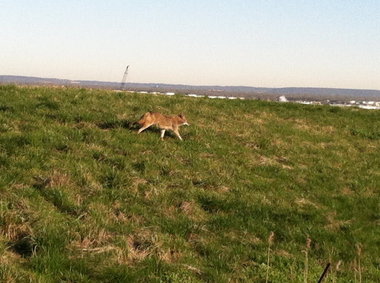Co-existing with Coyotes

The Staten Island Coyote at Freshkills Park. Photo credit: Nick Mirto
As habitat is restored in Freshkills Park, many animal species have already returned to the site, including foxes, turtles, egrets, rabbits, deer, and, as of recently, a coyote. In fact, coyotes are becoming increasingly prevalent in urbanized areas across the U.S., leading to conflicts over how to handle these wild animals when they come into contact with humans.
Coyotes find suburban areas particularly attractive for the abundant availability of food sources, including pet food, human food scraps, fruit trees, rodents, and even small pets. An article in the New York Times today highlights the difficulties that can arise in coexisting with these large predators. However, the article also noted the proactive approach that Denver has taken to prevent and safely manage conflicts with coyotes.
Founded in 2008, Project Coyote works with communities to develop “coexistence plans” that focus on strategic hazing, or training residents, animal control officers and parks staff to use consistent and persistent deterrents like loud noises, water spraying, bright lights, throwing objects, shouting and chasing coyotes.
Denver adopted a hazing-based management plan three years ago, sending out teams, for example, to scare off coyotes that had taken to trotting after joggers in a public park. And according to a case study prepared by wildlife specialists with the Humane Society and Denver’s Parks and Recreation Department, officials report that hazing has successfully reversed “aggressive and undesirable behaviors in coyote family groups and solitary coyotes, reducing pet attacks in neighborhoods and reducing the overall number of complaints from residents.”
In Denver, the killing of coyotes was reserved as a last resort — an action to be taken only in response to human attacks — but no lethal control has been used since the hazing program began in 2009. According to the case study, “one of the novel and cost-savings aspects of the program is its hands-on and empowering nature — it gives local residents the ability and confidence to address coyote conflicts in their own backyards, without outside help.” Similar programs are being developed or put into effect around the country.
Hopefully, the coyote spotted at Freshkills Park will be content to have the whole the park to himself for the time being, but the Denver example shows that education and local empowerment can play an important role in learning to live with urban coyotes.
(via New York Times)




